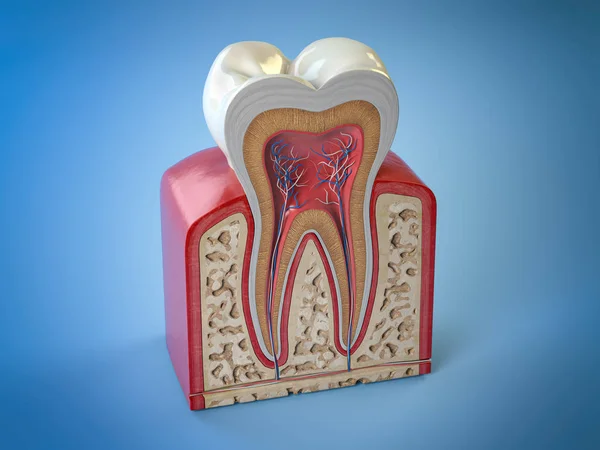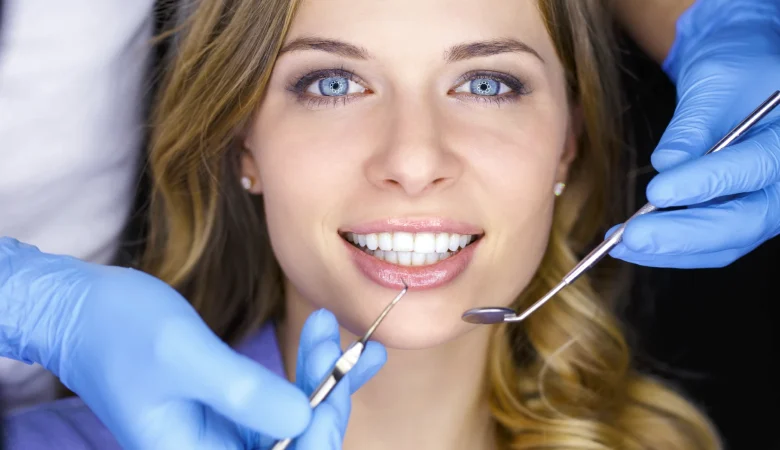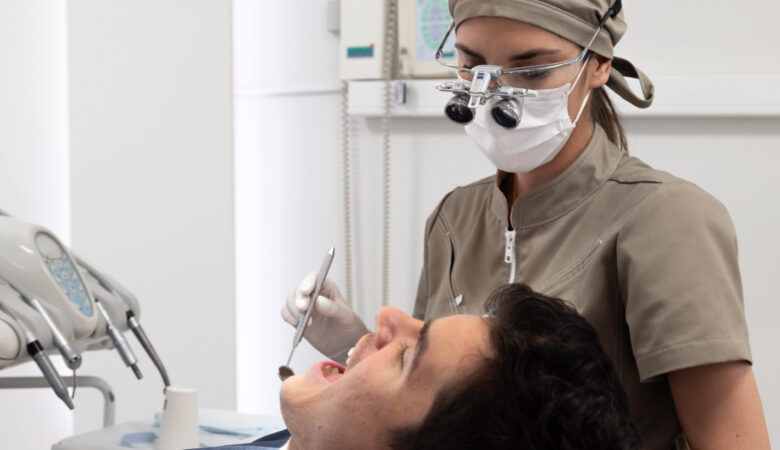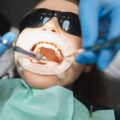Wisdom teeth removal is one of the most common dental surgeries, but it often leaves people feeling uncertain about the recovery process. Whether you’ve just had your wisdom teeth extracted or are preparing for the procedure, knowing what to expect can make the healing process much smoother.
Table of Contents
ToggleIn this guide, we’ll walk you through everything—from the immediate aftermath to long-term care—so you can recover quickly and avoid complications.
What Are Wisdom Teeth?
Wisdom teeth, also called third molars, typically emerge between the ages of 17 and 25. They are located at the very back of your mouth, and not everyone develops them.
For many people, wisdom teeth cause problems such as crowding, misalignment, or infection due to their position. This often necessitates their removal to maintain oral health and prevent future dental issues.
Why Is Wisdom Teeth Removal Necessary?
Wisdom teeth removal is often recommended when:
- The teeth are impacted (stuck under the gums).
- They grow at an angle, pushing against other teeth.
- They cause infections, cavities, or gum disease.
- They create overcrowding, leading to alignment issues.
Extracting problematic wisdom teeth can prevent long-term oral complications, making the procedure a proactive measure to protect your smile.
What to Expect After Wisdom Teeth Removal?
Immediately following surgery, you’ll likely experience swelling, minor bleeding, and some discomfort. While this might sound unpleasant, these symptoms are entirely normal and manageable.
The recovery process typically takes about 1–2 weeks, but most patients start feeling better within 3–4 days. Proper aftercare, including rest, diet adjustments, and medication, is crucial to avoiding complications like infections or dry sockets.
Immediate Aftercare
Post-Surgery Recovery Timeline
The first 24–48 hours are the most critical for healing. Here’s what you can expect:
- Day 1–2: Swelling and minor bleeding are common. Ice packs and gauze can help control these symptoms.
- Day 3–4: Swelling peaks, but pain begins to subside. Stick to soft foods and continue pain medication.
- Day 5–7: Most discomfort fades, and stitches may dissolve if used. Resume light activities but avoid strenuous exercise.
- Week 2: Swelling and bruising should disappear entirely, and you can start eating normally again.
Common Side Effects and How to Manage Them
- Swelling and Bruising:
- Apply ice packs for 15–20 minutes at a time.
- Sleep with your head elevated to reduce swelling.
- Bleeding:
- Bite gently on gauze to control bleeding.
- Avoid spitting, which may dislodge the clot.
- Pain:
- Take prescribed painkillers or over-the-counter medications like ibuprofen.
- Jaw Stiffness:
- Perform gentle jaw exercises as directed by your dentist.
Pain Management Techniques
- Medication: Use prescription medications or ibuprofen to reduce pain and inflammation.
- Ice Therapy: Apply ice packs on your cheeks for the first 24 hours.
- Rest and Relaxation: Avoid physical exertion to allow your body to focus on healing.
Natural remedies such as turmeric milk or chamomile tea may also help reduce inflammation and promote relaxation.
Diet and Nutrition After Surgery
What to Eat Immediately After Surgery
Stick to soft, easy-to-chew foods like:
- Smoothies (without seeds).
- Applesauce.
- Yogurt.
- Mashed potatoes.
- Soups (not too hot).
Avoid anything spicy, crunchy, or sticky that could irritate the extraction site.
Foods to Avoid During Recovery
- Hard or crunchy foods like nuts and chips.
- Chewy items such as steak or gummy candies.
- Spicy dishes that can cause irritation.
- Acidic foods like citrus fruits.
Hydration Tips for Faster Healing
Staying hydrated speeds up recovery, but avoid straws, as the suction can dislodge the blood clot and lead to a painful dry socket. Opt for water, herbal teas, and broths to stay hydrated.
Oral Hygiene and Cleaning Tips
How to Keep the Surgery Site Clean
Maintaining cleanliness after wisdom teeth removal is crucial for preventing infections. However, you need to be gentle around the surgical area to avoid disrupting the healing process.
- Day 1–2: Avoid rinsing your mouth vigorously. Instead, let water or a saline solution gently flow over the area.
- Day 3 onwards: Start rinsing with a warm saltwater solution (1/2 teaspoon of salt in a glass of warm water) after meals to remove food particles and bacteria.
- Tip: Avoid touching the wound with your fingers or tongue to prevent irritation or contamination.
When and How to Start Brushing Again
- First 24 Hours: Do not brush or floss near the surgical site to avoid disturbing the clot.
- Day 2–3: Carefully start brushing your other teeth with a soft-bristled toothbrush while avoiding direct contact with the surgical area.
- Week 1 Onwards: Once the swelling subsides, gradually return to your regular brushing routine, but stay cautious until the wound fully heals.
Rinsing and Gargling: Safe Practices
While rinsing is essential, improper techniques can lead to complications like dry sockets.
- Use lukewarm saltwater or prescribed mouthwash.
- Avoid mouthwashes containing alcohol, as they can cause irritation.
- Swish gently rather than forcefully to avoid dislodging the clot.
Potential Complications and How to Handle Them
Signs of Infection to Watch For
Infections are uncommon but can occur if proper care isn’t taken. Watch for these symptoms:
- Persistent swelling or redness around the surgery site.
- Severe pain that worsens instead of improving.
- Pus discharge or an unpleasant taste in your mouth.
- Fever or chills.
What to Do: Contact your dentist immediately if you notice any of these signs. Early intervention can prevent complications.
Dry Socket: Symptoms, Prevention, and Treatment
A dry socket occurs when the protective blood clot is dislodged, exposing the bone and nerves underneath. This condition can be extremely painful.
Symptoms:
- Intense throbbing pain 2–4 days after surgery.
- Bad breath or foul taste.
- Visible bone in the socket.
Prevention Tips:
- Avoid drinking through straws.
- Do not smoke or use tobacco products.
- Follow all aftercare instructions carefully.
Treatment:
If you suspect a dry socket, visit your dentist immediately for pain relief and dressing application.
Swelling and Bruising: When to Worry
Swelling and bruising are normal after surgery and usually peak around day 2 or 3 before gradually improving. However, excessive swelling accompanied by severe pain or fever could indicate an infection or other issue.
Home Remedies for Swelling:
- Apply ice packs for the first 24 hours, followed by warm compresses.
- Sleep with your head elevated to reduce fluid buildup.
- Stay hydrated to speed up recovery.
Lifestyle Adjustments During Recovery
Physical Activity Restrictions
Rest is vital during the first few days after surgery. Engaging in strenuous activities can increase blood flow, leading to bleeding or swelling.
Timeline for Activity Resumption:
- First 48 Hours: Rest completely.
- Days 3–5: Light walking is okay, but avoid heavy lifting or vigorous exercise.
- Week 1–2: Gradually return to normal activities as long as you feel comfortable.
Sleep Positions to Reduce Swelling
Sleeping properly can significantly affect recovery.
- Elevate Your Head: Use extra pillows to keep your head elevated.
- Avoid Sleeping on Your Side: Sleep on your back to minimize pressure on the surgical site.
- Tip: Use a travel pillow to keep your head stable if you tend to roll over while sleeping.
Avoiding Smoking and Alcohol
Smoking and alcohol can delay healing and increase the risk of complications.
- Smoking: The suction action can dislodge blood clots, leading to dry sockets. Avoid smoking for at least 72 hours after surgery, though quitting for the entire recovery period is preferable.
- Alcohol: Alcohol can interact negatively with pain medications and delay healing. Avoid it for at least a week after surgery.
Long-Term Care After Healing
Maintaining Oral Health Post-Recovery
Once your mouth has fully healed, maintaining good oral hygiene ensures long-term success.
- Brush and floss daily to prevent plaque buildup.
- Visit your dentist regularly for checkups and cleanings.
- Use a mouthwash to keep bacteria at bay.
Follow-Up Appointments: Why They Matter
Follow-up visits allow your dentist to monitor your healing progress and address any concerns.
- First Appointment: Typically scheduled 1 week after surgery to check for infections or complications.
- Subsequent Visits: Your dentist may schedule additional visits if any issues arise.
Don’t skip these appointments—they play a critical role in your recovery and long-term oral health.
Conclusion
Recovering from wisdom teeth removal doesn’t have to be a daunting experience. With proper aftercare, a soft diet, and good oral hygiene, you’ll be back to normal in no time. Remember to watch for signs of complications like infections or dry sockets, and don’t hesitate to reach out to your dentist if you have concerns.
By following the tips outlined in this guide, you’ll set yourself up for a smooth and speedy recovery. Take care of yourself, be patient, and give your mouth the time it needs to heal properly.












